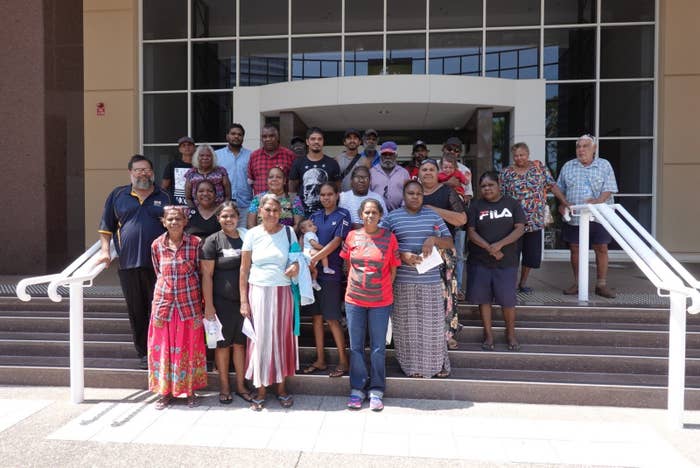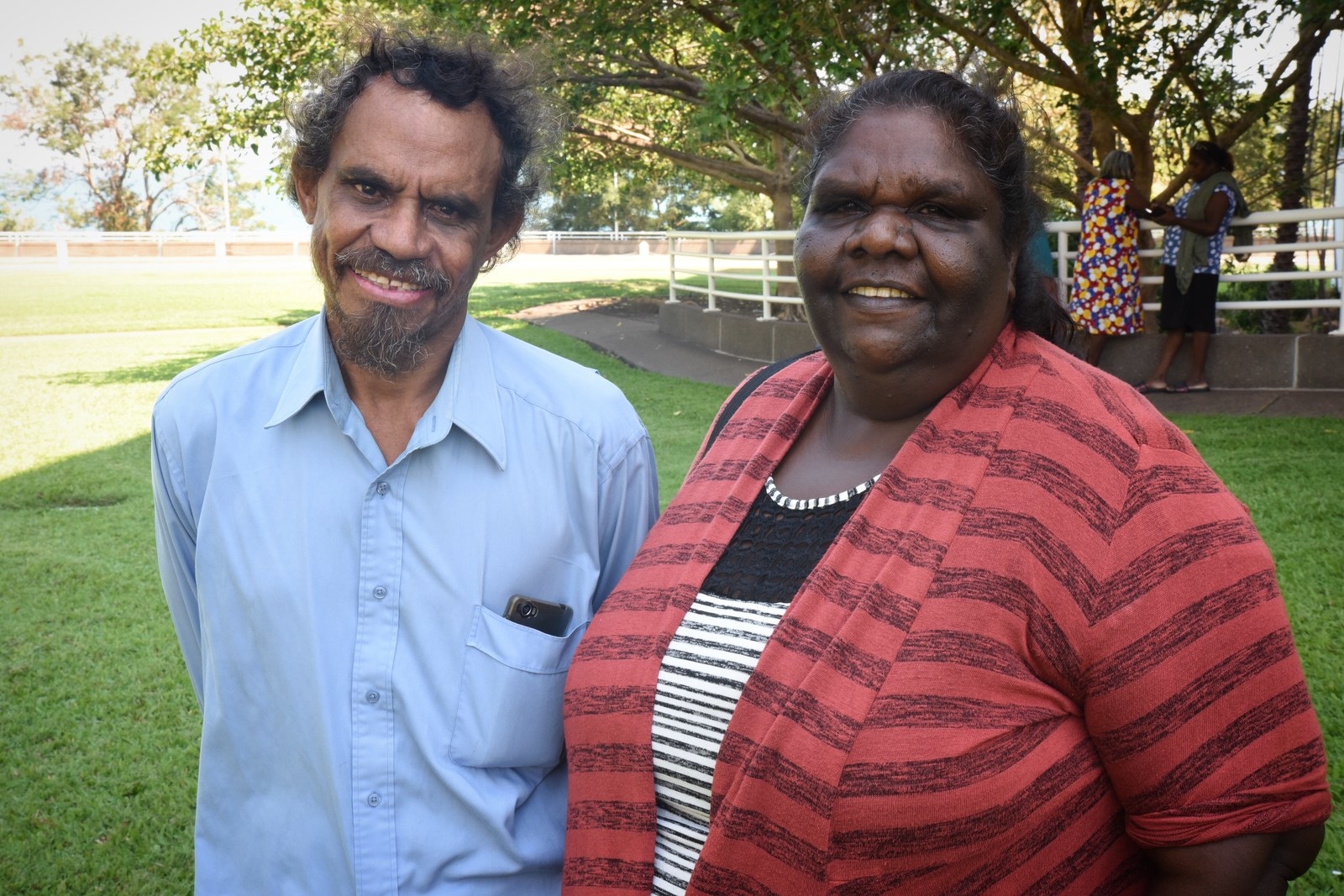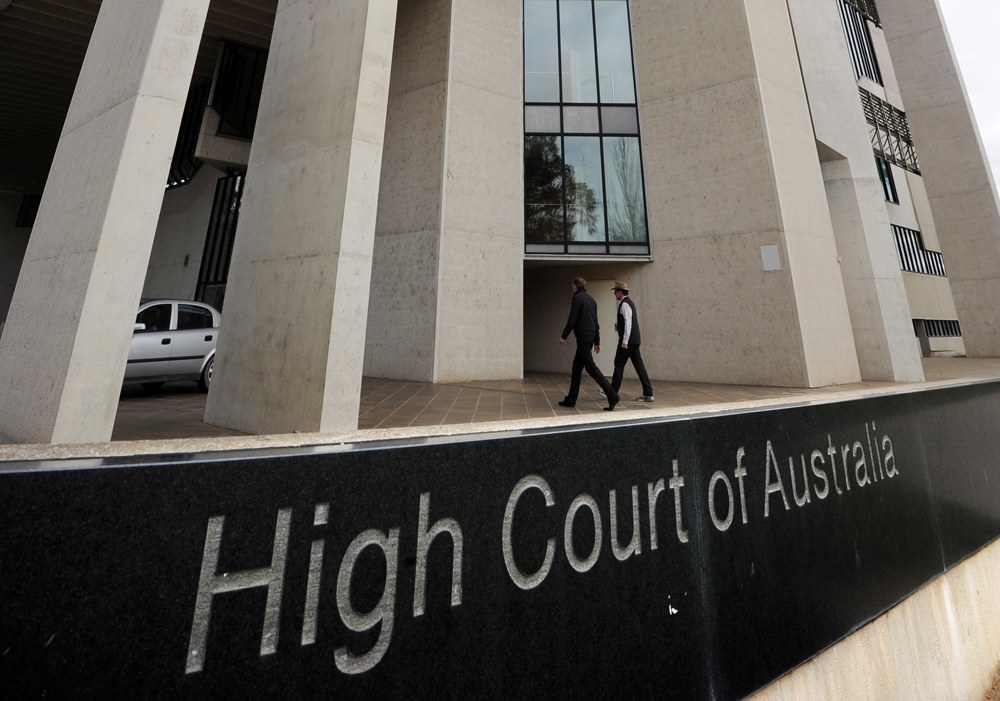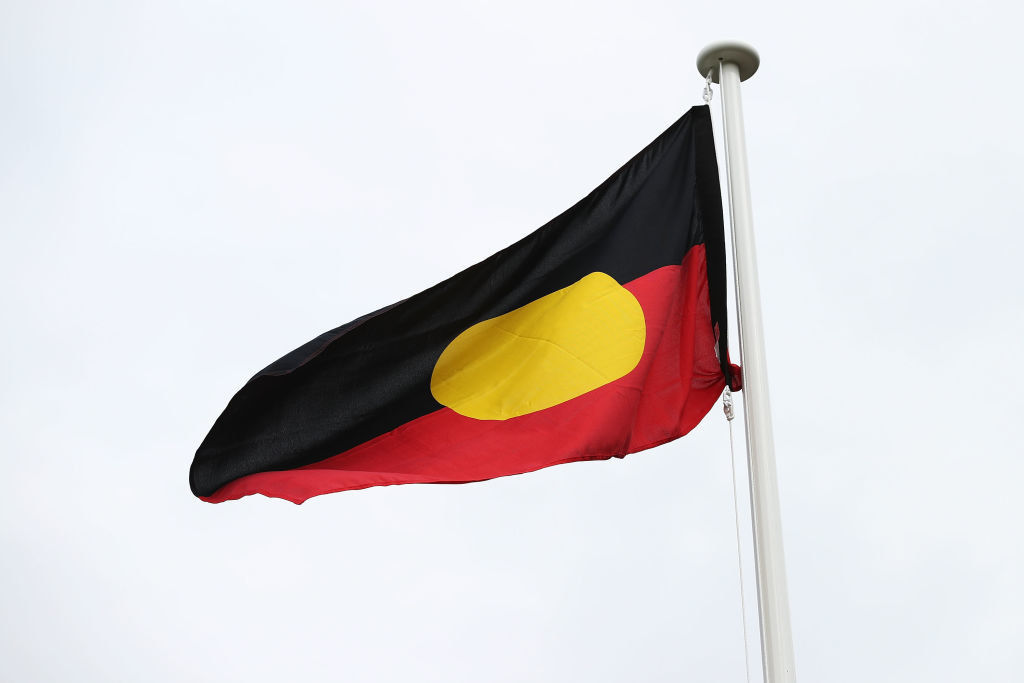A small piece of land in outback Australia could prove the key to unlocking hundreds of millions of dollars in compensation for the land that was taken from Aboriginal traditional owners.

Timber Creek is a remote town of about 230 people in the Northern Territory, a stop on the road on the 500km journey from Katherine to Kununurra. Much of the town and its surrounding land is owned by the Ngaliwurru and Nungali Peoples.
But part of Timber Creek — 1.27 square kilometres, to be precise — is the subject of a landmark decision due to be handed down in the High Court of Australia on Wednesday morning.
Experts say it is one of the most significant native title cases since the Mabo case recognised Aboriginal ownership of the land in 1992.
The case centres on 53 acts carried out by the Northern Territory government — such as building public works — on the relatively small parcel of land between 1980 and 1996.
These acts extinguished the native title rights of the traditional owners, who subsequently filed a lawsuit seeking compensation in the Federal Court.
In 2016, Justice John Mansfield awarded $3.3 million in a landmark decision that included $1.3 million compensation for the loss of connection to the land suffered by the traditional owners.
The decision was appealed to the Full Court of the Federal Court, where the sum was reduced to $2.9 million. Now it is being appealed again, by both parties, in the highest court in the land.
This is the first time the courts have dealt with the issue of how compensation should be calculated in native title cases, meaning the High Court's decision will set a significant precedent.
The plaintiffs

Traditional owner and plaintiff Lorraine Jones told BuzzFeed News in a phone interview that regardless of the outcome, she was happy the Timber Creek case had "opened a can of worms".
After the traditional owners were granted native title over the land, Jones said, they went ahead and looked at whether they could be compensated for the land where their rights had been extinguished.
"[We thought] we’ll give it a shot whether we win or lose, sort of thing," she said. "And showing a good example. We’re not going to sit back and let anyone ruin our country."
She hopes the outcome will assist traditional owners across Australia receive compensation for their land.
"They’re going through the same suffering that we went through," she said.
Chris Griffiths, whose father was the lead claimant in the case before he died last year, told BuzzFeed News a lack of consultation with traditional owners when structures were built had led to sacred sites being disturbed and significant community hurt and suffering as a result.
“There was no consultation in the beginning, when they started building. And for that, the consultation, we lost a lot,” Griffiths said. “Damages were made. Hearts were broken. Tears were falling.”
Both Griffiths and Jones said they were excited the decision was finally here, but also thought Wednesday would be an emotional day. Both of their fathers, senior Elders in the community, died in recent years.
“I really deeply wish that they were still around to see this outcome," Jones said. "I wish they were here with us today to celebrate, the good news or the bad news.”
Griffiths added: “I guess you have to still go on. But I think it will be a good decision for us, no matter what the court rules.”
Why is this only happening now?

Aboriginal people have had native title rights since the Mabo decision in 1992. However the courts have never been asked to rule on how much compensation should be awarded when those rights have been extinguished.
This is because compensation has, until now, been negotiated through deliberations and agreements rather than going before a judge, according to senior lecturer at the University of New South Wales Law School, Leon Terrill.
Terrill said these agreements are often between traditional owners and mining companies and can include financial compensation, trust funds and employment opportunities.
What will the impact be?
Terrill said governments, mining companies and native title holders were all looking on with interest at the decision on the land in Timber Creek.
"This is worth hundreds of millions, or billions," Terrill said. "No-one actually knows how much [land this will affect]. No-one has crunched the numbers to know how much we’re talking about here."
Terrill said the decision is about "setting the norms" and will have significant ramifications for how compensation is awarded in the courts in the future.
It will also serve as a background for future negotiations between Indigenous traditional owners and the companies and governments responsible for extinguishing native title.
"It’s definitely one of the most significant native title decisions for years," he said.
What, exactly, is being appealed?

The compensation was awarded in three parts, all of them under appeal: the economic value of the land, the interest that should be paid, and the amount that should be paid for spiritual losses.
The Ngaliwurru and Nungali people and the Northern Territory government are appealing the amount awarded for economic loss. Justice Mansfield initially awarded $512,000 (80% of the freehold value of the land) and the Full Court of the Federal Court reduced that on appeal to $416,325 (65% of the freehold value).
The traditional owners say they should receive 100% of the freehold value, while the NT and federal governments say it should be 50%.
The Ngaliwurru and Nungali are also appealing the interest awarded, saying it should be calculated at a higher rate — using compound instead of simple interest.
And the NT government is appealing the $1.3 million awarded for the spiritual value of the land, saying it should be cut down to $130,000. The federal government says it should be $230,000.
Terrill said calculating the spiritual value of the land was a "tricky job", and the Full Court had not altered Mansfield's reasoning in the first appeal.
"There was all of these factors to weigh up and take into account, including the very particular nature of the relationship between Indigenous people and the land," he said. "The impact that extinguishment can have on identity and culture.
"[Justice Mansfield] said 'it’s not possible to come up with a format here'. You’ve got to put all the elements on the table in front of you, and look at them, and come up with a figure. That’s what he did, and he came up with $1.3 million. And the Federal Court said yep, that’s acceptable."
The High Court is expected to hand down its ruling at 10am on Wednesday.
